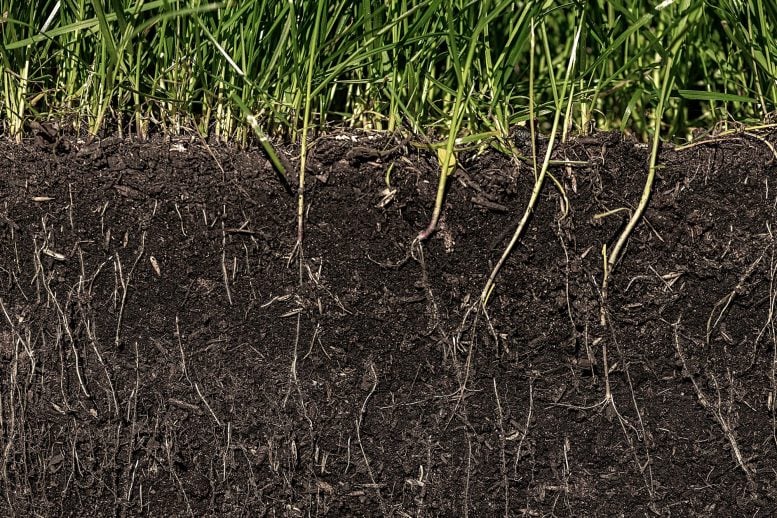
The Minamata Convention on Mercury aims to reduce global mercury emissions, but a recent study suggests these efforts may not be enough.
Researchers found that soil holds far more mercury than previously estimated, particularly in plant-dense areas and regions with permafrost. As climate change promotes vegetation growth, this could lead to increased soil mercury levels, potentially counteracting global reduction efforts.
The Minamata Convention on Mercury
In 2017, the Minamata Convention on Mercury went into effect. It was designed to help curb mercury emissions and limit exposure across the globe. However, a new study of mercury levels in soil suggests that the treaty’s provisions might not be enough.
The study, published today (August 14) in ACS’ Environmental Science & Technology, estimates that soil stores substantially more mercury than previously thought, and it predicts that increases in plant growth due to climate change may add even more.
The Persistent Nature of Mercury Pollution
Mercury is a persistent environmental pollutant, moving through air, water, and soil, and accumulating within plants and animals. Soil is the primary reservoir for mercury, storing three times the amount found in the oceans and 150 times the amount found in the atmosphere.
Typically, the heavy metal naturally moves through these reservoirs, but humans have altered this cycling. Human-caused climate change increases carbon dioxide levels, promoting vegetation growth and most likely depositing more mercury in the soil when the vegetation decomposes.
Previous studies on soil mercury levels have mostly focused on small, regional scales. But Xuejun Wang, Maodian Liu, and colleagues wanted to develop a more accurate, worldwide model of soil mercury levels that could take into account the effects of a continuously warming climate.
The Study’s Comprehensive Global Approach
The team began by compiling nearly 19,000 previously published soil mercury measurements, producing one of the largest databases of its kind. The dataset was fed into a machine learning algorithm to estimate the global distribution of mercury in both topsoil and subsoil.
They found that the total amount of mercury stored in the first 40 inches (around 1 meter) of soil is approximately 4.7 million tons. This value is double what some previous estimates concluded, though some of those studies accounted for a shallower depth of soil.
The team’s model identified the highest levels of mercury in plant-dense areas such as low latitudes of the tropics, but also in permafrost and areas with high human density. Conversely, bare land such as shrubland or grassland had relatively low levels of soil mercury.
Climate Change’s Impact on Soil Mercury Levels
To understand how climate warming could affect mercury soil levels, the researchers combined their initial model with datasets of environmental factors representing future climate scenarios. Their model predicts that as temperatures increase around the globe, vegetation growth will be promoted as well, which could raise soil mercury levels in turn.
This symbiotic effect would outweigh the reduction efforts proposed by current worldwide control schemes, like those in the Minamata Convention. Though additional research and observations are needed, the researchers say that this work emphasizes the need for stricter, long-term, and simultaneous control of mercury and carbon dioxide emissions.
Reference: “Warming-Induced Vegetation Greening May Aggravate Soil Mercury Levels Worldwide” by Wenzhe Guo, Maodian Liu, Qianru Zhang, Yidan Deng, Zhaohan Chu, Hehao Qin, Yangmingkai Li, Yu-Rong Liu, Haoran Zhang, Wei Zhang, Shu Tao and Xuejun Wang, 14 August 2024, Environmental Science & Technology.
DOI: 10.1021/acs.est.4c01923
The authors acknowledge funding from the National Natural Science Foundation of China; the High-Performance Computing Platform of Peking University; the Beijing Natural Science Foundation; the China Postdoctoral Science Foundation; and the Fundamental Research Funds for the Central Universities, Peking University.
2 Comments
The issue isn’t just the presence of mercury, it is the concentration of bio-available mercury, which is primarily methylmercury found in anaerobic environments, such as wetlands. The concern should be about moving up the food chain from bacteria, fungi, and earthworms to higher order animals. What these researchers should be looking at is the concentration of mercury in plants and/or mercury vapor above the ground. The low vapor pressure for mercury is probably why the concentrations are found to be low in “bare land such as shrubland or grassland.” It long ago vaporized and moved elsewhere. Conversely, the presence in permafrost can be attributed to immobility because of the low temperatures. Conversation with a USGS geologist in the Sacramento (CA) office, whose specialty was mercury in the former gold-mining areas of the California Mother Lode, where mercury is quite abundant, acknowledged that he had not observed obvious symptoms in the native wildlife, unlike in Minamata.
This appears to be a classic case of a solution in search of a problem. While mercury can and does move up the food chain, primarily in the form of methylmercury, it seems that they know little about the uptake of mercury by plants that are eaten by insects and herbivores. The reason that coal is a source of mercury is that plants have always taken up mercury, and as the dead plants have been compressed, desiccated, and transformed into coal, the mercury has stayed behind. Something else that should be explored is if life has evolved with the ability to tolerate low levels of background mercury. Every time there is a volcanic eruption or forest fire, mercury is released into the atmosphere. It isn’t going to go away.
Ah, so the “experts” finally admit increased CO2 is good for the plants! Do you realize how good this news is?
Whatever reduces the need for synthetic fertilizers in agriculture going forward is great.